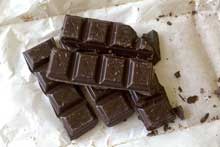I’m helping to organize a fancy, expensive annual dinner for about 100 women in the food professions. The chef presented his menu to us, and each of the 7 courses were his most extravagant creations. Meat, mushrooms and cream formed it’s base. My first reaction was, this meal is brown and boring!
The pleasures of the new “farm to table” cuisine (you know, the ever so trendy buy local) is that the chefs have a great love and respect of the basic ingredients. They don’t want to hide them; they want to showcase them. A beet looks and tastes like a beet, chard is wilted, not pureed with cream into pablum. And the meat! Often from rare breeds, raised in small herds, on pasture, it has a different flavor and fat profile than what you usually see coming from the huge farms. A chef has to handle it just so. A good chef brings out the flavor notes of the region.
I’ve been away for a few days, researching my next book. Part of the research required that I dine at the Sheppard Mansion in Hanover, Penn. Their chef, Andrew Little, grew up in this area that is rich in agricultural resources. Luckily for Hanover, after stints at some nationally known restaurants, he returned home. In Hanover, he knows the “tomato lady” and the cheese maker and where to find the best sweet corn. The owners of the Mansion raise Scottish Highland Cattle, just to have good beef for the table. They’ve contracted with a farmer for pastured pigs. I’m trying to convince them to raise their own chickens.
The food, from a chef who spends much of his time sourcing ingredients, is just the way I like it- dishes sparkling with color, and with flavors that speak of the ingredients. It doesn’t hurt that the breads and desserts are made with care on the premises. (I live and die by the bread basket.) Best of all, after a three-course meal, I felt sated but not bloated.
The best thing to do after a meal at the Sheppard Mansion is to spend the night there. I had to do that, too, for my research. (Yes, it’s a hard job, but someone has to do it!)
